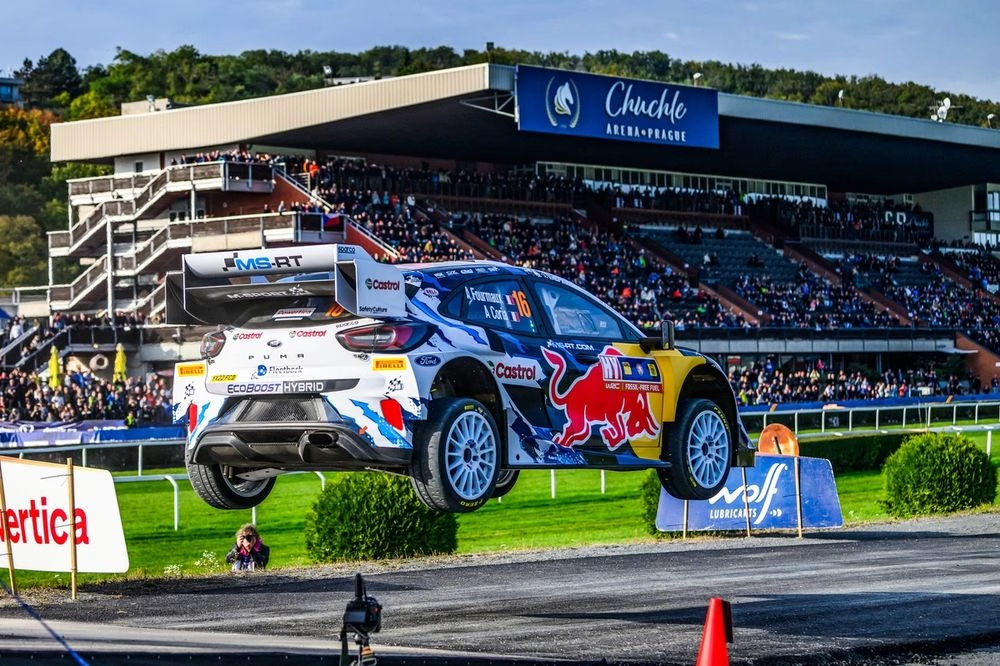Adjusting to life without hybrid power in the World Rally Championship next year won’t require “a huge amount of work” in the off-season, according to M-Sport-Ford lead engineer Tim Jackson.
Last week the FIA confirmed that, as predicted, the 100kW control hybrid kits will be removed from Rally1 cars next year, having been first introduced in 2022 as part of the Rally1 ruleset.
The decision for cars to rely solely on 1.6 litre turbocharged internal combustion engines – powered by 100% sustainable fuel – for propulsion has been triggered due to a rise in the cost of running hybrid units, following the introduction of new safety guidelines at Greece’s Acropolis Rally in September.
Supplier Compact Dynamics stipulated that all hybrid units would have to be stripped and sent back to its factory for full repair if they suffered three shock errors over 15G or one over 25G. Earlier this year these units could be reset on site during a rally.
M-Sport, the only non-full factory team in the top class, subsequently raised concerns about the feasibility of running a Rally1 programme following the change.
These fears have now been allayed with the confirmation that hybrid power will be abandoned, although this change will require teams to carry out work to prepare and fine-tune their cars for 2025.
In addition to the removal of hybrid the FIA has confirmed that the car’s minimum weight has been reduced from 1260 kilograms to 1180 kilograms given the hybrid unit weighs 87kg. A slightly smaller air restrictor – 35mm instead of 36mm – will also be mandatory.
Adrien Fourmaux, Alexandre Coria, M-Sport Ford World Rally Team Ford Puma Rally1
Photo by: M-Sport
While the changes on paper are not as significant as those proposed earlier this year, teams will now have to work with ballast – affecting the cars’ centre of gravity – to meet the minimum weight now the hybrid unit has been removed.
“The regulations that they have proposed and been voted on have a slightly lower weight limit for the car overall with a view that it increases the safety kind of things, and there is a slightly smaller engine restrictor as well,” Jackson told Motorsport.com.
“The power-to-weight ratio is the same basically.
“There is some work to do on ballast to adjust the car to that weight. When you have ballast to play with you have the opportunity to move the centre of gravity, but ultimately, we will be getting rid of a big 100 kilo lump in one part…
Click Here to Read the Full Original Article at Motorsport.com – RALLY – Stories…

